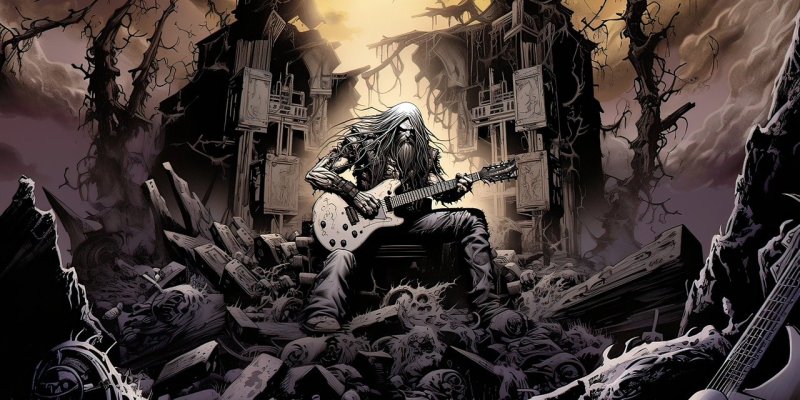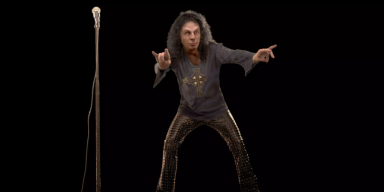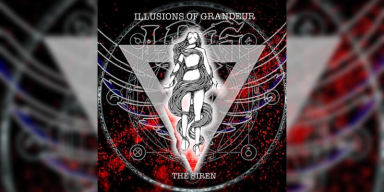
Metal bands are well-known for their attention-grabbing album covers, whether explicitly provocative or juxtaposed with themes of innocence. Although some may shun metal and its many subgenres because of its aggressive perception, lyrical misinterpretations, and intimidating aesthetics, metal explores worthwhile topics like death, existentialism, and deeper human emotions. Over the decades, the genre has developed and branched off but has kept the core elements that define it, including dark lyrics, haunting harmonies, energetic drumming styles, heavy guitar riffs, and the iconography and macabre artwork plastered on the album covers.
Metal bands draw inspiration from themes of risk, control, and unpredictability—ideas that resonate not only in music but also in the world of chance. Just as most iconic heavy metal album covers, including Iron Maiden’s The Number of the Beast and Metallica’s Master of Puppets , evoke feelings of power, rebellion, and fate, the same themes can be found in the world of high-stakes casino games. In these games, players take on the same unpredictable risks, looking for that elusive win with every roll of the dice or spin of the wheel. If you enjoy the thrill of unpredictability in metal music, you might appreciate the excitement of trying your luck at a casino, where the stakes are high, and the potential for a big win is ever-present. For more information on exciting gambling options, read this list from BonusFinder .
Black Sabbath, Black Sabbath
You know that feeling when you come across a creepy image of something online, and you’re peering at it, wondering what’s going on? That’s the sort of vibe Black Sabbath’s self-titled album evoked, showcasing a woman wearing a black cloak standing alone in the midst of a grainy, woodsy, isolated environment. The designer, Keith Macmillan, used Kodak infrared aerochrome film for its pink hue, tweaked the chemistry, and boiled and froze the photograph to give it that grainy, eerie feel to it. The artwork perfectly complemented the title track—brooding, mysterious, and ominous, with bell and thunder sound effects to drive the sound home.
Butchered at Birth, Cannibal Corpse
Butchered at Birth is jarring, both visually and musically, but in the best way possible. It represents Cannibal Corpse’s extreme nature , as their band name and song titles signify. Their lyrics are grotesque and graphic, and their music is considered pioneering of the death metal genre as the band has been around since 1988. You’ll find plenty of time signature changes, complex solos, speedy drumming, heavy guitar riffs, and guttural growling that all contribute to that unsettling and intense atmosphere. As the band aimed to be the “musical equivalent of B-movie horror flicks,” they successfully achieved this through their shock value and the graphic nature of their album covers, particularly Butchered at Birth . It’s often said to be one of the most gruesome album covers ever.
The Number of the Beast, Iron Maiden
Iron Maiden is another heavy metal band from the ‘80s known for consistency in their album covers, featuring their mascot, Eddie. The Number of the Beast not only spotlights interesting artwork but is one of the most commercially successful metal albums of all time. In fact, because of its popularity, the album cover became a topic of controversy because of its religious references and dark themes. On the cover, Eddie is shown puppeteering Satan, while Satan puppeteers a smaller Eddie, all taking place in a hell-like scene inspired by European Christian art. It’s made to evoke a “Who’s controlling whom” narrative.
Master of Puppets, Metallica
Like The Number of the Beast , Master of Puppets garnered the same notoriety and popularity, if not more so, with many calling it the greatest metal album of all time. In fact, the title track became the first metal recording selected by the Library of Congress to be preserved in the National Recording Registry . The cover shows a uniform cemetery field of white crosses attached to strings controlled by red hands in the sky. It expresses themes that many metal bands explore, including control, abuse of power, powerlessness, and alienation. Metallica often tells stories in their music, which explains why they wanted an equally impactful visual to accompany the album. The band wanted to go for a cinematic approach to their album cover and to express disillusionment with religion.
Rage Against the Machine, Rage Against the Machine
Despite its extensive history and long-standing reputation as a genre-blending metal band, Rage Against the Machine only ever made four studio albums between 1992 and 2000. Nevertheless, their very first album set the stage for how they would impact the world with their music through politically themed, unapologetic lyrics and bold symbolism. It features the Vietnamese monk Thich Quang Duc setting himself on fire at a busy intersection in Saigon—an iconic photograph that is fueled with emotion and intensity. As it is a classic representation of resistance, it served as the ideal image for the album cover, aligning with the themes explored in their music.
Holy Diver, Dio
Dio drew plenty of inspiration from the rising popularity of heroic adventure pop culture elements, such as role-playing games like Dungeons and Dragons and The Lord of the Rings series, for this debut album. With its epic themes, storytelling qualities, and dramatic soundscapes, the album could soundtrack a movie or TV show. Like many other metal bands, Dio’s album covers feature a band mascot. In this case, Murray is the dark demonic creature first seen in “Holy Diver.” Murray is depicted whipping a broken metal chain, towering over a man wearing a priest’s outfit in a body of water, wrapped in chains. The band wanted to go for a cinematic approach to their album cover and to express disillusionment with religion.
Follow the Leader, Korn
Rather than delving into mythology, the supernatural, or rebellion, Korn explicitly focuses on alienation and pain in their music. Their album covers are known to be strange and surreal, sometimes photograph-based and other times illustrated. Follow the Leader was created by Todd McFarlane and his team, depicting a child playing hopscotch toward the edge of a cliff. It wasn’t the first time Korn featured children and their innocence in a disturbing context to create a sense of discomfort. The cover serves a double meaning, as it was also made to be a taunt to other bands in the genre that were highly influenced by Korn.
Reviews - Interviews - Promo - Radio Play
Contact zach@metaldevastationradio.com












